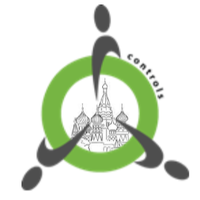
Tango Users Meeting Russia
Event MoscowFirst Tango Users Meeting in Russia was held in Moscow on May,18 2017.
The idea of holding this meeting was put by Igor Khokhriakov (HZG). It was supported by Andy Götz (ESRF) and Jean-Michel Chaize (ESRF) and we say many thanks to them.
The meeting was sponsored by the Tango Controls Collaboration. Some travel and accommodation expenses, workshop loft rent and catering were paid by the Collaboration.
The organizational issues were dealt with by IK company.
The main goals of the meeting were:
- to get acquainted with Tango Users in Russia;
- to share experience in using Tango;
- to share feature requests, bugs, wishes for the next Tango releases;
- to start building Tango Community in Russia.
The day was divided into 3 parts: Introductory section, Technical talks and Tango V9 and V10 discussion.
We would like to thank our speakers:
- Evgeny Gorbachev (LHEP, JINR, Dubna)
- Alexander Senchenko (Budker institute accelerators, Novosibirsk)
- Vladimir Lebedev (Physlab, MSU, Moscow)
- Yuri Karmazikov (LMA, Kurchatov Institute, Moscow)
- Andrey Ustyuzhanin (YandexDataFactory, Amsterdam/Moscow)
- Georgy Sedykh (JINR, Dubna)
- Vladimir Elkin (JINR, Dubna)
- Georgy Fatkin (Budker institute accelerators, Novosibirsk)
- Olga Merkulova (IK, Moscow)
- Igor Khokhriakov (IK, Moscow)

Apart from the speakers in the meeting took part:
Vasiliy Andreev (JINR, Dubna), Predrag Pejovic (University of Belgrade, Belgrade), Filip Sreckovic (Informatika a.d., Belgrade), Boris Roshchin (Institute Crystallography, Moscow), Artem Babamuratov (Kurchatov Institute, Moscow), Denis Shuvalov (Kurchatov Institute, Moscow), Roman Senin (Kurchatov Institute, Moscow), Mikhail Smirnov (Kurchatov Institute), Alexey Korobov (Kurchatov Institute), Boris Shishov.

From our point of view the meeting was very informative and useful. Some of the participants have found answers to the questions they had, some - architectural design concepts, some – ensured they are on the right way. Almost all the participants had their ideas and suggestions of how to make Tango better.
The results of the meeting will be presented on the 31th Tango Users Meeting in Florence (June,8 2017).
The meeting took place at:
Nastavnicheskiy per., 17, str. 1
Moscow
Russia
The meeting was held in Russian.
Photos above were taken by Olga Merkulova.
| TIME | TALK AND SPEAKER |
|---|---|
| 10-12:30 |
Opening talk - 5'. Olga Merkulova
|
|
Why Tango? - 10'. Igor Khokhriakov
|
|
|
The Nuclotron and NICA control system - 30'. E. Gorbachev, JINR
The Nuclotron is a 6 GeV/n superconducting proton synchrotron operating at JINR, Dubna since 1993. It will be the core of the future accelerating complex NICA which is under construction now. The TANGO based control system of the accelerating complex is under development now. The report describes its structure, main features and present status. |
|
|
Using Tango for the LIA-20 project and at Budker institute accelerators - 30'. Alexander Senchenko, BINP
|
|
|
Simple'n'Stupid TANGO adapter generator - 15'. Vladimir Lebedev, Physlab, MSU
The talk is about in-house system for describing the RPC (Remote Procedure Call) protocols and the part of the system that, based on these descriptions, generates firmware for microcontrollers (servers), C / C ++ libraries (clients) and TANGO adapters for them, as well as practical experience using the generated code via PyTango. |
|
|
Practice of Tango-based control system deployment at synchrotron experimental endstation - 15'. Yuri Karmazikov, LMA, Kurchatov
The report presents arhitecture and design features of Tango - based distributed control system for X-Ray structure analysys (RSA) endstation of Kurchatov Synchrotron Radiation Source. Hardware and software are covered as far as some practical integration questions. |
|
|
Towards automation of data certification for CERN CMS experiment - 30', A. Ustyuzhanin, YandexDataFactory
Daily operation of a large-scale experiment is a challenging task, particularly from perspectives of routine monitoring of quality for data being taken. We describe an approach that uses Machine Learning for the automated system to monitor data quality, which is based on partial use of data qualified manually by detector experts. The system automatically classifies marginal cases: both of good an bad data, and use human expert decision to classify remaining “grey area” cases. This study uses collision data collected by the CMS experiment at LHC in 2010. We demonstrate that proposed workflow is able to automatically process up to 80% of samples without noticeable degradation of the result. |
|
| Q&A - 15' | |
| 12:30-13:30 | Break |
|
Tango software development at JINR - 60'. G. Sedykh, V. Elkin, JINR
The report describes tango modules, developed at JINR, and their application in NICA control system.
|
|
|
VME and CAN based electronics for automation with Tango-servers 30', G. Fatkin, BINP
|
|
|
Tango V10 roadmap 30', Igor Khokhriakov, IK
Overview of the Tango V10 roadmap |
|
| 15:30-16:00 | Coffee break |
| Tango V9 problems and wishes 30'. All | |
| Tango V10 feature requests and discussion 45'. All | |
| Summary and closing discussion 5'. All |
